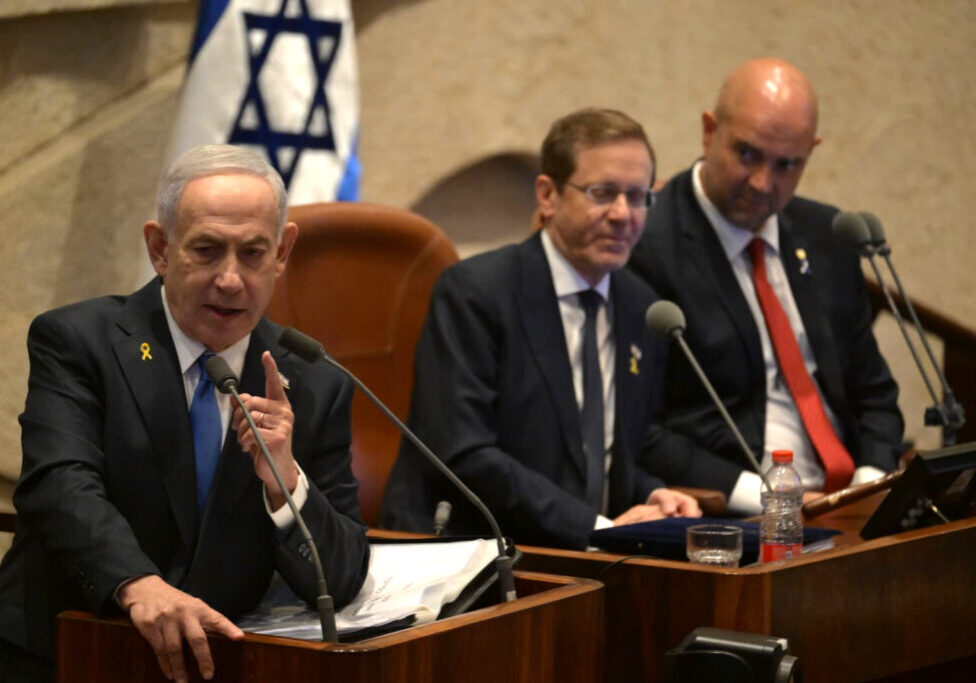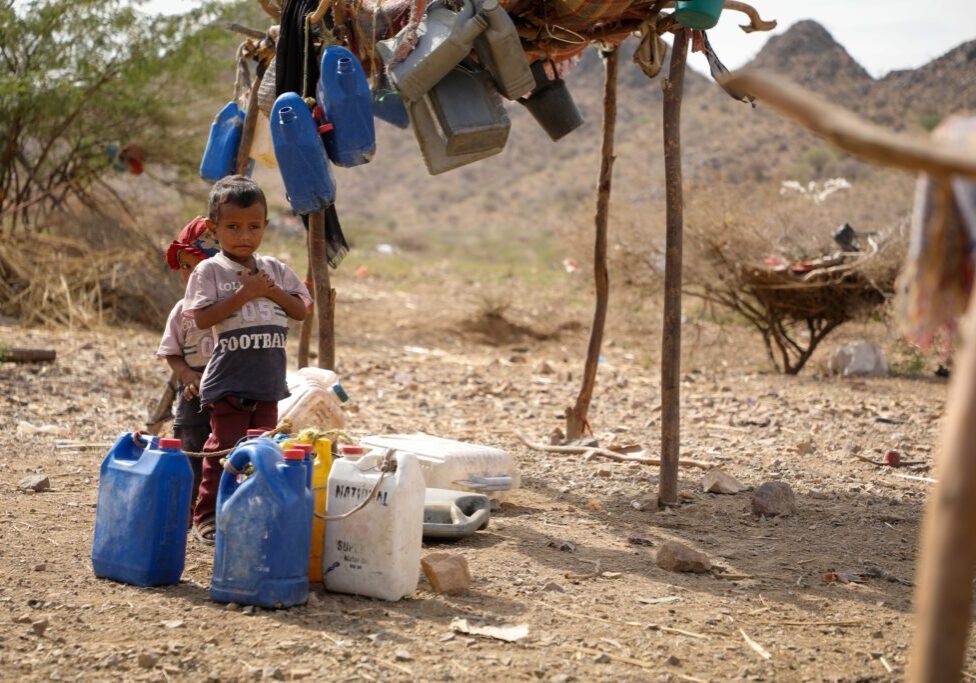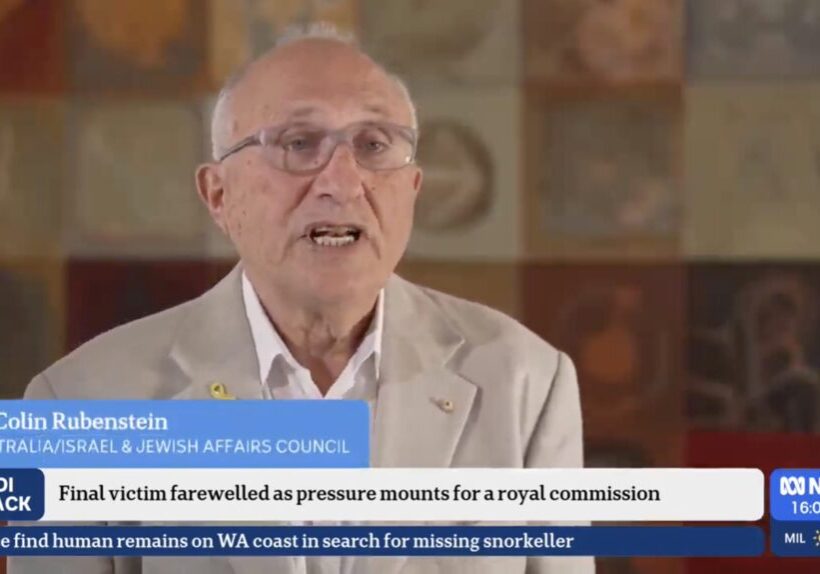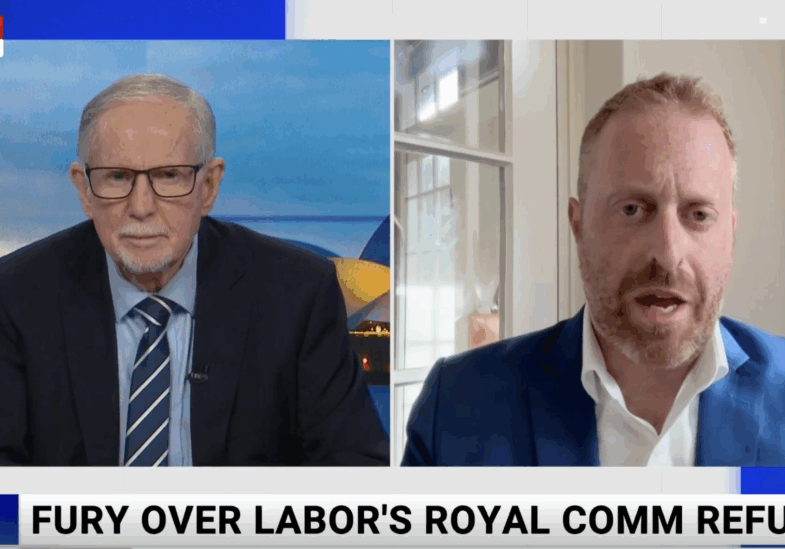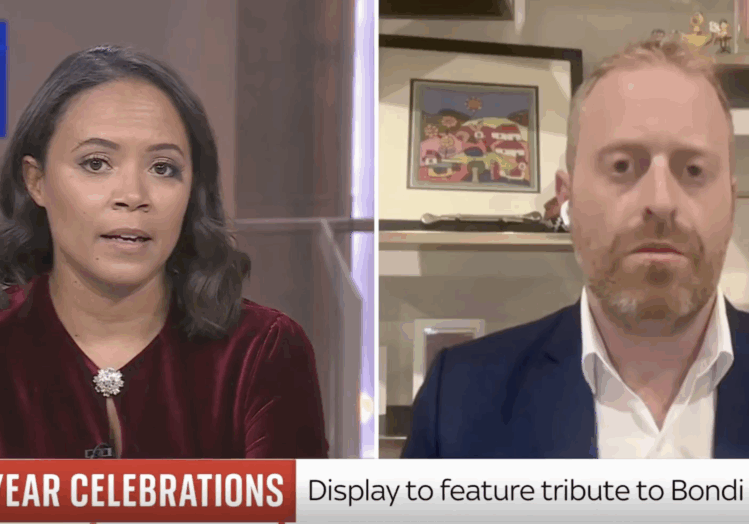FRESH AIR
UPDATES
Setting the facts straight on Hebron
September 9, 2016 | Ahron Shapiro

Along with Jerusalem, Hebron – Judaism’s second holiest city as home to the tombs of patriarchs Abraham, Isaac, Jacob and two out of the three matriarchs – is one of the most contentious final-status issues between Israelis and Palestinians.
That’s why it’s disappointing that the Palestinian Embassy reportedly mass-emailed every Federal member in Parliament late last month, urging Canberra to exert diplomatic pressure on Israel to unilaterally capitulate to Palestinian demands over the city.
In doing so, the Palestinian Embassy evidently seems to be continuing the Palestinian Authority’s (PA) strategy of seeking to bypass negotiations and internationalise its conflict with Israel, instead of negotiating directly with Israel over issues like Hebron, as it is obligated to by the terms of the 1993 Oslo Accords and its later addendums.
The Rationale?
The impetus for the Palestinian Embassy’s August 24 Hebron “fact sheet” sent to the Australian MPs (which can be viewed online here)
appears to have been a story in Ha’aretz (subscription required) on August 22 (which was subsequently picked up and embellished by the Palestinian Ma’an website) parroting claims by the Israeli anti-settlement group Peace Now that the Israeli government plans to allow settlers to build homes on the site of an IDF army position in the Israeli-secured enclave of Hebron known as H2.
(The story does not identify exactly where “Mitkanim” is, but using photos available on the Internet, I’ve been able to place it very much in the thick of the Jewish neighbourhoods of Hebron. See labelled photos of the entrance to Mitkanim here
and here, and a labelled map of the area both zoomed in and from a distance, for perspective.)
When you actually read closely inside the Ha’aretz story, however, the whole matter seems overblown.
As the Coordinator of [Israeli] Government Activities in the Territories (COGAT) responded to Ha’aretz’s inquiry:
[COGAT] would only say that “authorities in the area are examining returning some of the land for civilian use,” referring to the Mitkanim outpost. “However, plans for civilian building have not yet been submitted or approved.”
True, the story does say that a planning permit was issued earlier this year – essentially allowing interested parties to approach the government with a proposal. Citing “sources”, the story continued that the hypothetical plan could, at most, envisage just “several housing units” built entirely on land owned by Jews in the British Mandate period (before the British government depopulated Hebron of Jews in response to a massacre of 67 Jews in 1929.)
But the story also says no proposal has been submitted, and even if it were, there is no reason to assume it would be allowed to advance beyond that stage – after all, as I blogged recently, for long periods Israeli Prime Minister Binyamin Netanyahu has been instituting a “silent freeze” on housing approvals and, since taking office in 2009, has not allowed enough new housing to be built in the settlements to meet demand or accommodate “natural growth”.
In the world of Israeli coalition politics, merely floating a proposal for a few new houses in Hebron could give pro-settler parties like Naftali Bennett’s Jewish Home an achievement to show its voters, even if it is never acted upon.
No matter. Regardless of the rationale for being circulated now, the Palestinian Embassy’s “fact sheet” stands on its own as a cynical, poorly researched and misleading report.
The facts?
Listed under “The Facts”, the sheet presents a number of bullet points – some fairly benign, others malicious and still others cynically altered from the language of their sourced citation to better suit the Palestinian narrative.
One bullet point reads:
After the 1993 Oslo I Accord, Hebron was divided into the Palestinian controlled H1 Zone (comprising 80% of Hebron) and the Israeli controlled H2 Zone (comprising the remaining 20%)
This is actually a helpful and significant inclusion, although the way it is phrased misleadingly creates the impression the division was something that was imposed, or just happened, rather than accurately convey the reality that the division was mutually agreed via direct negotiations between the Yasser Arafat-led Palestinian Authority and Netanyahu-led Israel in what became known as the 1997 Hebron Agreement.
What’s important to keep in mind is that most of the Palestinian grievances listed in the “fact sheet” focus on the reality on the ground created by the division the PA itself agreed to in 1997 (albeit with some stringencies added in H2 by Israel only in response to terror attacks and the second Intifada later on).
To put it another way, in 1997 the PA agreed that the IDF will have responsibility for security in H2 until a final status agreement is reached, but the PA quite unfairly portrays everything that Israel does to implement the Hebron Agreement as malicious or even criminal.
Another helpful and significant inclusion is the fact sheet’s admission that the Cave of the Patriarchs is a site holy to Jews, and not just Muslims. This is something that PA officials don’t always acknowledge. However, here too, it would have been more honest if the document could have gone a step further and acknowledged that – precisely due to its importance to Judaism – Hebron has had a continuous Jewish community living there for thousands of years (with the aforementioned exception of 1929 to 1967), and that the “settlements” in Hebron are built on historically Jewish-owned property in the city.
Changing the language of a UN-sourced document to better suit the Palestinian narrative
While claiming to be neutral in the Israeli-Palestinian conflict, the UN’s Office for the Coordination for Humanitarian Affairs (OCHA) has never been accused of producing reports sympathetic to Israel, but apparently even a 2013 OCHA fact sheet on Hebron used by the PA as a source in its own fact sheet wasn’t one-sided enough, because it felt the need to change the wording and meaning from the source material to make Israel look worse. There is no obvious justification for this.
The fact sheet reads:
There are over 120 Israeli military blockades [sic, and emphasis added], including 18 permanently staffed checkpoints, which segregate restricted areas from the rest of Hebron
The UN document says differently.
There are over 120 physical obstacles [emphasis added], deployed by the Israeli military, which segregate the restricted areas from the rest of the city, including 18 permanently staffed checkpoints.
The difference is that the language of the UN document simply states how the IDF operationally was able to separate the PA-controlled H1 with the Israeli-controlled H2 – through the use of barricades to direct traffic through security checkpoints. The need for this system is obvious – if the boundary between H1 and H2 were porous, the IDF could not effectively secure H2.
The PA fact sheet pulls the same trick again at the very next dot point.
The PA fact sheet reads:
Palestinians are barred access to several “Israeli only” streets in Hebron
But the UN document, the source of the citation, says it very differently:
Several streets in the restricted areas that lead to the Israeli settlements are prohibited for Palestinian traffic and some also for pedestrian movement.
The difference is that the UN document puts the restrictions into their proper context, while the PA fact sheet does not. In effect, the PA fact sheet edits out the reason why such access is restricted – namely that the streets at issue serve as the link between the four Jewish neighbourhoods in H2 and are therefore vulnerable to attack.
Omitted from both the UN and PA fact sheets is the fact that all streets in H1 are forbidden to Israeli pedestrians and traffic.
Using a biased, outdated source
In contrast to the way the PA fact sheet distorts the language of the UN document, it very carefully quotes verbatim from a nine-year-old story from Electronic Intifada, a website with an open agenda to oppose the existence of Israel in any form.
As a biased source, the Electronic Intifada shouldn’t be trusted to report Palestinian claims against Israel fairly, but the PA fact sheet uses this dated story as the basis for malicious claims made in two dot points – one that the IDF somehow prevented a bleeding pregnant Hebron Palestinian from getting to a hospital in time to save her foetus, and the other from a Palestinian in H2 that claimed that he had been subject to abuse from soldiers and settlers and that Israeli police refused to do anything about it.
These anecdotes – if they even happened in the way described at all – are claims almost a decade old and therefore have no relevance to the situation in Hebron today.
Gratuitous and spurious home demolition claim
Some of the things that find their way onto the “fact sheet” actually have nothing to do with Hebron at all. For example, the seventh dot-point on the page states:
Palestinian homes are continuously demolished to make way for Israeli settlements; for example, on 2 February this year, 23 Palestinian homes in the Hebron area were destroyed to make room for Israeli Defense Force ‘training areas’, leaving 10 adults and 68 children homeless.
The story links to a Ha’aretz story by far-left activist journalist Amira Hass about land disputes between the IDF and Palestinians at Jinba and Halawa – tiny arid encampments so minuscule you can’t locate them on most maps. (The anti-occupation NGO B’Tselem produced its own special map to help activists find them [see the red box in the pdf.])
To say these places are in the “Hebron area” is quite a stretch. While it’s true that all areas of the West Bank south of Hebron to the Green Line are broadly called the Hebron Hills, Jinba and Halawa are each at least 20km straight-line distance from Hebron and further by roads – as far from Hebron as Hebron is from Bethlehem. On the other hand, they are both less than a kilometre from pre-1967 Israel.
Moreover, having just claimed that Israel demolishes Palestinian homes to make way for settlements – which is absolutely not true – the Embassy strangely chose an example of demolitions that everyone agrees have nothing to do with settlements at all. The dispute over this particular land, which sits in an area the IDF uses for live fire training, goes back to the 1970s. So when the PA says that Israel demolished dwellings there, one must consider the possibility that these were structures newly built by the Palestinians in violation of terms of the Oslo Accords in order to provoke a response in the first place.
Other claims taken out of context
Embassy fact sheet:
Last month, all entrances to Hebron were closed except for one-affecting the lives of approximately 700,000 Palestinian people in the area.
The reality:
This rare measure – the first of its scope since the search for three missing Israelis kidnapped (and later found murdered) by a terrorist cell in Hebron in 2014 – was necessary as part of a manhunt for another active terror cell.
Embassy fact sheet:
Almost 2,000 Palestinian businesses in Hebron have been forced to shut down due to restrictions.
The reality:
Expanded security measures implemented along the streets connecting the Jewish neighbourhoods of Hebron in the aftermath of heightened terror and violence led to the IDF’s difficult decision to close a number of Palestinian storefronts. Many other businesses relocated. These increased measures were actually taken over 15 years ago and are subject to periodic review.
Embassy fact sheet:
Palestinians living in H2 are constantly subject to abuse and violence at the hands of Israeli settlers, which is often overseen by Israeli soldiers.
The reality:
H2 is under constant eyewitness and video surveillance by anti-settler NGOs and their supporters. Incidents of clashes between settlers and Palestinians are likely empirically rare, because we know that those that do occur become news stories.
Embassy fact sheet:
The large majority of complaints about Israeli settler attacks are closed by the Israeli police without indictment.
The reality:
Indictments, whether in Hebron or elsewhere, can only occur when supported by evidence. There is no claim here that Israeli police has failed to indict when evidence supports it.
The Embassy handout ends with a self-serving “analysis” and separate section accusing Israel of failing to live up to its obligations to the Palestinians of Hebron under international law.
In conclusion
Hebron is one of the most challenging and confronting flashpoints between Israel and the Palestinians. It’s also unique. No other Palestinian city in the West Bank today has Jewish neighbourhoods in it. (Of course, Palestinians would prefer to place east Jerusalem in the same category as Hebron as well. However, this would be wrong, being that east Jerusalem Palestinians carry Israeli identity cards and live under Israeli sovereignty in neighbourhoods patrolled by Israeli police, not the IDF).
In spite of its unique nature, Hebron is routinely highlighted by Palestinians and their supporters as a typical example of the negative effects of Occupation. This is extremely misleading, because well over 90 percent of Palestinians in the West Bank, and all Gazans, do not encounter settlers or the IDF in their daily lives since they live in Area A, in cities and towns under Palestinian self-rule and secured by Palestinian forces.
The future of the Jews of Hebron remains a highly contentious issue, even among Israelis, but the 1993 Oslo Accords and its later additions obligate the Israelis and Palestinians to negotiate over the issue themselves.
The Palestinian rejection of peace plans offered to them by Israel in 2000, 2001 and 2008 and the Palestinian refusal to negotiate an end to the conflict since that time (or even submit their own counteroffers) should not be rewarded by Australia with pressure on Israel to unilaterally concede to Palestinian demands on Hebron in the absence of a peace agreement.
If the Hebron Accords and subsequent Israeli responses to secure Hebron in the face of terrorism is unacceptable to the Palestinians, they should be encouraged to resume direct negotiations with Israel instead of looking for ways to circumvent them.
Ahron Shapiro
Tags: Israel



